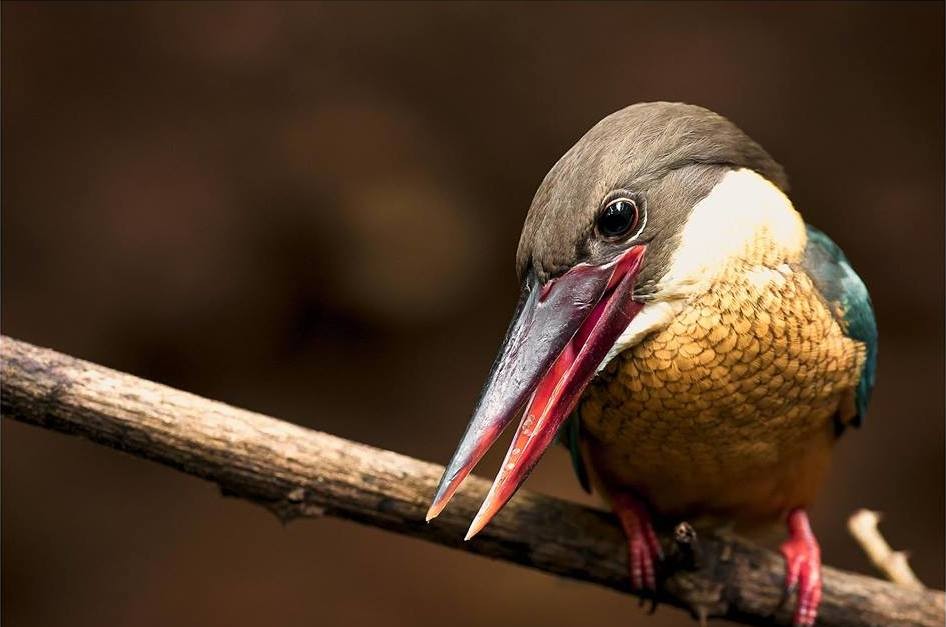Stork-billed Kingfisher
A species of Stork-billed Kingfishers Scientific name : Pelargopsis capensis Genus : Stork-billed Kingfishers
Stork-billed Kingfisher, A species of Stork-billed Kingfishers
Botanical name: Pelargopsis capensis
Genus: Stork-billed Kingfishers
Content
Description People often ask General Info
 Photo By Ashish dalela , used under CC-BY-SA-4.0 /Cropped and compressed from original
Photo By Ashish dalela , used under CC-BY-SA-4.0 /Cropped and compressed from original Description
The stork-billed kingfisher (Pelargopsis capensis), is a tree kingfisher which is widely but sparsely distributed in the tropical Indian subcontinent and Southeast Asia, from India to Indonesia. This kingfisher is resident throughout its range. It is a very large kingfisher, measuring 35 cm (14 in) in length. The adult has a green back, blue wings and tail, and olive-brown head. Its underparts and neck are buff. The very large bill and legs are bright red. The flight of the stork-billed kingfisher is laboured and flapping, but direct. Sexes are similar. There are 13 races or subspecies, differing mostly in plumage detail, but P. c. gigantea of the Sulu Archipelago in the Philippines has a white head, neck and underparts. The call of this noisy kingfisher is a low and far reaching peer-por-por repeated about every 5 seconds, as well cackling ke-ke-ke-ke-ke-ke. The stork-billed kingfisher lives in a variety of well-wooded habitats near lakes, rivers, or coasts. It perches quietly whilst seeking food, and is often inconspicuous despite its size. It is territorial and will chase away eagles and other large predators. This species hunts fish, frogs, crabs, rodents and young birds. Adults dig their nests in river banks, decaying trees, or tree termite nests. A clutch of two to five round white eggs is typical. 
Size
35 cm
Colors
Brown
Green
Red
Gray
Blue
Orange
Life Expectancy
2 years
Nest Placement
Cavity
Feeding Habits
Stork-billed Kingfisher predominantly hunts aquatic animals including fish and crabs. Its feeding behavior involves perching quietly and scanning for prey, showing territorial aggression towards invaders. Stork-billed Kingfisher also consumes frogs, rodents, and young birds, utilizing keen eyesight for hunting.
Habitat
Stork-billed Kingfisher tends to inhabit lowland wetland environments, preferably where dense foliage is in close proximity to freshwater or coastal waters. These birds are typically associated with the wooded areas surrounding streams, rivers, and coastal regions, extending to elevations as high as 1200 meters in certain regions. They thrive in primary rainforests, swamps, bamboo groves, and mangroves, yet they are also adaptable to human-altered landscapes such as coconut plantations and rice paddies. Stork-billed Kingfisher often perches on mangrove roots along the coast.
Dite type
Piscivorous
People often ask
General Info
Feeding Habits
Bird food type
Species Status
Not globally threatened.
Scientific Classification
Phylum
Chordates Class
Birds Family
Kingfishers Genus
Stork-billed Kingfishers Species
Stork-billed Kingfisher